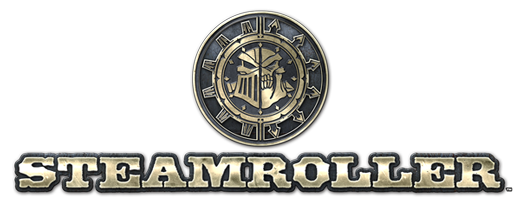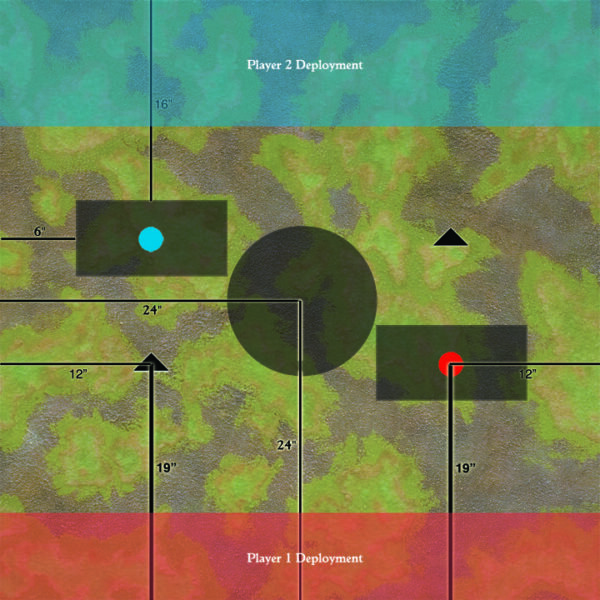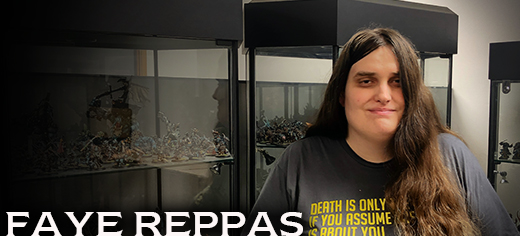Steamroller is the official tournament format for WARMACHINE and HORDES. For those of you who don’t already know, the Steamroller 2019 season is coming to an end soon—it had a whole extra year in the sun due to some unfortunate circumstances, but Steamroller 2021 is in Community Integrated Development (CID) right now. This article will be for those of you who don’t want to jump in and playtest but still want the lowdown on what’s happening.
CID begins today (May 19th) and likely ends on June 1st. Roughly a month after the CID, the new Steamroller document will be released, so anyone with tournaments currently planned will want to keep their eyes open in mid- to late June for that announcement. I’ll do my best to give everyone a two-week heads-up before the document is released to help avoid an awkward situation of players not knowing which tournament packet to use.
This season brings something new to Steamroller as well. Five new Steamroller terrain features are being added to the document. The type of terrain these will be is already set in stone; the rules governing them, however, may change. So, if you have been looking for a new hobby project, feel free to start working on some of these new terrain features.
Now let’s dig into the new features.
New Terrain Rules
Crater
A Crater is treated as a trench template except it is irregularly shaped, often circular. Craters should not be larger than 5˝ in diameter.
Unlike trenches, Craters cannot be placed in contact with other Craters and must follow the normal rules for restricted terrain. A Crater is a restricted terrain feature.
Craters are designed to create an alternative to traditional trenches. When designing this, we wanted to create a restricted form of terrain that worked well on a devastated battlefield map. You should see Craters as a potential alternative to placing an awkward house onto a badlands-themed table. If you have a piece of terrain consisting of small clustered Craters but the area of which is not significantly larger than the area of a 5˝ diameter circle, then you should consider the entire terrain piece to be one Crater.
Quicksand
Quicksand is hazardous rough terrain represented by a 3˝, 4˝, or 5˝ AOE template. Models lose and cannot gain Pathfinder while within Quicksand, and models that become knocked down while within Quicksand suffer 1 damage point. Quicksand is a restricted hazard terrain feature.
This new hazard offers a ton of interesting play experience. First and foremost, it’s rough terrain that bypasses Pathfinder—and that is a pretty strange thing for terrain to do. Quicksand should be placed most often near the center of the table in order for it to actually become consequential. Consider placing it where it will block potential charge lanes around other terrain features.
Open Grave
An Open Grave is treated as a trench template except it’s smaller. An Open Grave trench template is exactly 2˝ x 3˝.
Open Graves can be placed within 1˝ of each other regardless of normal terrain placement restrictions. Open Graves should be placed by the EO in clusters—count every 2–4 Open Graves as a single terrain feature when determining how much terrain has been placed on the table. Open Grave is an unrestricted terrain feature.
This terrain feature is the most simple of the bunch. It is exclusively meant as a straight swap for a trench template. Currently one large-based model, one medium- and one small-based model, or three small-based models can fit in one of these Open Graves.
Tall Grass
Tall Grass is rough terrain that provides concealment to small- and medium-based models completely within its perimeter. These terrain features should be approximately the same size as most forests. Tall Grass is an unrestricted terrain feature.
Tall Grass is meant to be an alternative to rubble that incentivizes small- and medium-based models over large-based models. Currently, it doesn’t exclude medium-based models for those armies that are comprised mostly of medium-based models, i.e., Trollbloods and Blindwater Congregation. These terrain features should be fairly large—generally the size of a larger forest terrain feature.
Windstorm
A Windstorm is open terrain and is represented by a 3˝, 4˝, or 5˝ AOE template. When a model completely within the perimeter of a Windstorm makes a ranged attack or is targeted by a ranged attack, the attack suffers –3 RNG. Windstorm is an unrestricted terrain feature.
Windstorms are designed to give some reprieve to melee-focused armies. They should often be about 18˝–20˝ up one of the two table sides for maximum effectiveness. Do note that a 5˝ windstorm will be able to affect a huge-based model!
New Objective Rules
The following objectives are replacing the 2019 versions of Armory, Stockpile, and Treasure Chest. Fuel Cache, Dugout, and Observatory are slated to remain as-is.
As a quick aside, I should outline our intention for objectives in SR 2021. Objectives should be in one of two categories: generalized but minimal benefit and specific but slightly more powerful. The first category includes the Fuel Cache and Wreckage, while the second includes the Shrine, Armory, Dugout, and Observatory.
The first category is almost always useful but doesn’t specifically counter a power of your opponent’s army. The second are designed to grant you something your army might be lacking when facing a specialized foe.
All objectives share these stats and two rules:
Steamroller Objective, Construct, Base Size: Large
DEF: 5 ARM: 18 Damage: 15
Immobile – This model has no Normal Movement or Combat Action, cannot become knocked down or be moved, and is automatically hit by melee attacks.
Objective – This model cannot be placed, cannot channel spells, and cannot be chosen as a Prey target. This model cannot be targeted or damaged until the second player’s second turn. This model cannot engage or be engaged. Models never gain a back strike bonus against this model. Friendly models can ignore this model when determining LOS and can advance through this model if they have enough movement to move completely past it.
Armory
Superior Ammunition – During your Control Phase, choose one friendly Faction model within 4˝ of this model and one of its weapons. That weapon gains Damage Type: Magical for one round.
This objective received a slight redesign. Instead of only benefiting the next attack of a model, it benefits all the attacks a model makes with a specific weapon. This allows for more counter-play with large incorporeal models or models that can’t be damaged by non-magical attacks.
Shrine
Ward of Protection – During your Control Phase, choose one friendly Faction model within 4˝ of this model. That model gains Aegis for one round. (A model with Aegis is immune to continuous effects.)
This is an entirely new objective that aims to provide a small amount of relief from recent models that fully deny certain immunities. Since Aegis makes you immune to continuous effects in general, rules like Meltdown will not affect it. Further, since gaining immunity to a continuous effect also removes that effect from the model in question, it’s a good way to put the fire out on a slowly dying warcaster.
Wreckage
Shelter – During your Control Phase, choose one friendly Faction model within 4˝ of this model. That model gains concealment for one round.
This is meant to be a good all-around objective that can help protect key pieces with a high DEF stat. By providing concealment anywhere on the table, you can get a prowl model to a strategically perfect position without relying on terrain. It also serves the more obvious purpose of slightly increasing the survivability of all warcasters, warlocks, and infernal masters.
New Scenario Rules
The following scenarios are planned to roll over from SR2019 into SR2021 as-is, without any changes: Invasion, Recon. Three scenarios from SR2019 are receiving changes to their map layouts, as noted below. Anarchy is being removed completely and will be replaced by a new scenario, Split Decision.
I won’t be giving the full rules here—just the maps and a brief statement. None of the baseline rules for killbox, zones, flags, objectives, game length, and victory conditions have changed. Do note, however, that all six scenarios now include objectives. This is intentional.
King of the Hill 2021
The two outside zones and objectives have each been pushed 3˝ toward the center line. This was to reduce the ability of table-edge-hugging contesting or scoring. Bringing the various models slightly toward the center has increased the ability to score and contest most of the scoring elements in this scenario.
Bunkers 2021
The only change to Bunkers was to remove the center flag. This was to reduce the potential for explosive scoring in a single turn.
Spread the Net 2021
Unlike Bunkers, Spread the Net gained two new scoring elements. This was done primarily to have objectives in every single scenario; however, this does mean that there is a more significant potential to score 5 or 4 points in a single turn.
Split Decision
Replacing Anarchy is Split Decision. This scenario will have a similar feel to its predecessor but will also have one less scoring element. In this scenario, it is intentional that the objectives are contesting the flags.
That is the current form of the Steamroller 2021 packet. With CID underway, some things will likely change. If you are interested in joining the CID, you can do so using this link. And in the end, I bid you all good luck in the Steamroller 2021 season!






